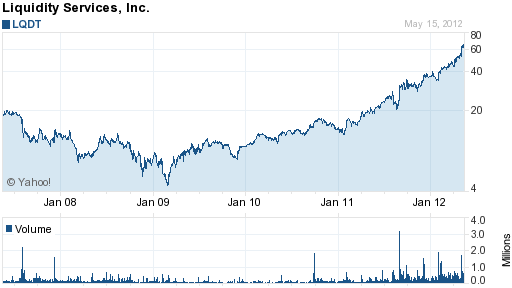One reason why I don’t own companies like JP Morgan (NYSE: JPM) is because you truly don’t have a clue what’s going on inside these companies. Even top management (such as Jamie Dimon) has to find out through a relatively roundabout way that some of his employees have blown away $2 billion in equity making trades they presumably thought were hedging some other risk but turned out not to be.
Can anybody with a straight face look at their 10-K and make heads or tails of it?
In essence, when you invest in these types of companies you are really taking a leap of faith that the assets they claim to have are real and collectible, and that the liabilities aren’t misstated in such a way that causes them to pay out more than what you see on the books. You are also taking a leap of faith that their loan portfolio takes in more income than they pay out to depositors.
On paper, you are paying $37/share for a company that analysts (before this 50 cent per share trading loss) believe will make $4.97/share this year and $5.60/share next year. Let’s pretend this is true. Sound cheap? Sounds like it, but ultimately do you really know what you are purchasing?
You are buying an implicit guarantee that JPM will crank up its dividend yield over a period of time and hopefully rack up some capital appreciation since its earnings are significantly higher than its dividend payout. The question is – will the company blow up? JP Morgan blowing up doesn’t seem all that likely right now, but just ask people that invested in Bear Stearns, Merrill Lynch, Wachovia, or Washington Mutual five years ago, where an implosion equally seemed unlikely. Who knows? I don’t, and that’s why I’m staying away from these true leap of faiths like JP Morgan equity.
This type of thinking applies to most large cap financial companies, including the large Canadian Banks (specifically, TD, RY, CM, BMO, BNS and to a lesser degree NA and CWB).
That said, you can also invest in these large capital financial firms as a variety of a Pascal Wager where if companies like JPM collapse (or one of the big five Canadian banks) that there is going to be so much collateral damage that subsequently earning a return on investment is not going to make much difference since you’ll be hiding in your underground bunker while civilization collapses around you.
